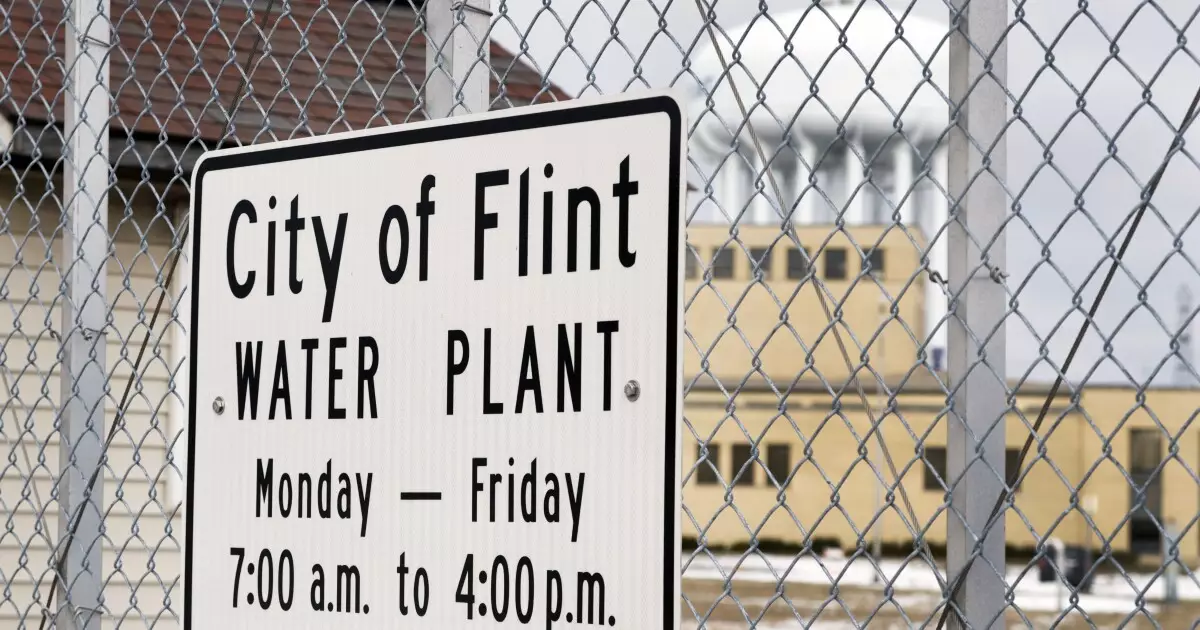The issue of lead in drinking water has haunted American cities for decades, particularly following the infamous crisis in Flint, Michigan. It was a grievous reminder of how systemic failures can lead to public health emergencies. Many Americans were shocked and outraged when it was discovered that lead pipes were leaching toxic metals into the water supply, affecting thousands of residents, especially children. This incident not only highlighted the systemic infrastructure issues affecting many urban areas but also emphasized the critical need for strict regulations governing drinking water standards. In light of this, the Biden administration’s recent initiative to mandate the replacement of lead pipes across the country marks a significant turning point in public health policy.
On a recent Tuesday, President Biden announced the Lead and Copper Rule Improvements—an initiative hailed as the strictest drinking water regulation in three decades. Biden’s passionate remarks in Milwaukee underscored a clear mandate: if government cannot safeguard public health, what purpose does it serve? This new rule, aimed at the pervasive issue of lead contamination in drinking water systems, is expected to affect nearly all cities across the United States. The rule calls for a comprehensive inventory of existing lead pipes and mandates their replacement within a decade, marking a decisive step towards ensuring safe drinking water for all.
This announcement follows a series of failures tied to previously lax regulations under former President Donald Trump, which many viewed as a regressive step in public health protections. Vice President Kamala Harris has also echoed calls for swift action, emphasizing the unions and communities reliant on clean water resources, particularly in swing states that could prove pivotal in upcoming elections.
Despite the overwhelming necessity for lead pipe replacement, the new regulations haven’t gone unchallenged. Fifteen Republican attorneys general have voiced their concerns regarding the practicality and financial implications of such sweeping changes. Critics argue that the costs associated with replacing 9.2 million lead pipes could be exorbitant. The American Water Works Association estimates a staggering $90 billion to execute these replacements—far exceeding the EPA’s estimations of $20 to $30 billion.
The announcement of $2.6 billion in grants as part of the ongoing Infrastructure Investment and Jobs Act is a positive step, yet many question whether this funding will be sufficient to meet the projected needs. The average American city’s water system relies predominantly on local revenues and loans, forcing municipalities to explore various financial avenues, from municipal bonds to federal aid. This complex interplay of local economics and federal regulation necessitates careful planning to ensure that water systems can finance these essential upgrades.
The Biden administration’s plan includes a decade-long timeline for full compliance, although the deadline will not kick into high gear for another three years. Some cities, such as Chicago—boasting the highest number of lead pipes—may face additional hurdles due to the substantial costs involved. To alleviate pressure, advocates are promoting the Financing Lead Out of Water (FLOW) Act, a proposal aimed at simplifying how public utilities can access municipal bonds to finance lead line replacements.
This initiative, if passed, would allow public utilities to bypass certain regulatory hurdles when utilizing tax-exempt bonds, fostering a more streamlined approach to addressing lead contamination. However, the success of these initiatives hinges on robust political support and the public’s ability to mobilize around this critical public health issue.
The urgency of the Biden administration’s new lead pipe replacement rule cannot be understated. The ramifications extend beyond mere infrastructure, touching upon fundamental questions of health equity, environmental justice, and the responsibilities of government to its citizens. An effective implementation of these changes promises not only to remediate a long-standing crisis but also to foster a renewed trust in public water systems across the nation. A concerted effort involving local governments, federal support, and community engagement will be crucial in bringing this vision to life, reinforcing the idea that access to safe drinking water is a right, not a privilege.

